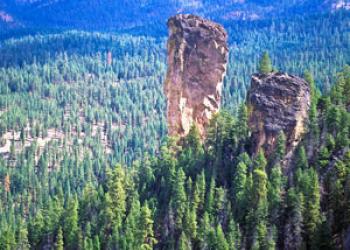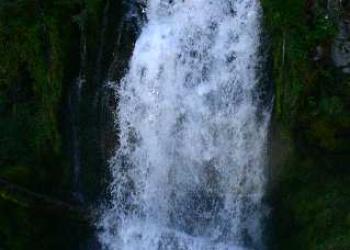Wilderness
One of our nation's greatest treasures is the National Wilderness Preservation System established by the Wilderness Act of 1964. Wildernesses are lands designated by Congress to be protected and preserved in their natural condition, without permanent improvements or habitation.
Always use Leave No Trace techniques to help keep these areas wild, clean, and pristine. Maps are available for these areas.
Wilderness Regulations
Whether day-hiking or overnight back-packing, all individuals and/or groups must obtain a FREE, Self-Issued Wilderness Visitor Use Permit at the trailhead. Permits are required from Memorial Day through October 31.
*These permits provide “need-to-know” visitor information, aid search & rescue operations, track usage trends and assist the pursuit towards Wilderness preservation.
Get your Permit and Learn More
Motorized equipment and equipment used for mechanical transport is prohibited. This includes the use of motor vehicles, motorboats, motorized equipment, bicycles, hang gliders, wagons, carts, portage wheels, and the landing of aircraft including helicopters.
Note: Other regulations that also apply to wilderness areas can be found in the 36 CFR sections 261. This also includes drones or unmanned aircraft systems (UAS).
- Groups larger than 12 persons and 12 head of stock.
- Building, maintaining, attending, or using a campfire within 100 foot slope distance (37 adult steps) of any permanent lake, stream, spring, pond or system trail.
- Leaving refuse, debris, trash, litter, food or human/pet waste in an exposed or unsanitary condition.
- Hitching, tethering, picketing, or securing any pack or saddle stock within 200 feet slope distance of any permanent lake, stream, spring, pond, shelter or system trail.
- Motorized equipment and equipment used for mechanical transport including: chainsaws, bicycles, motorcycles, snowmobiles, hang gliders, aircraft, motorboats, wagons, game carts, baby strollers, wheelbarrows and other non-primitive tools and wheeled vehicles (wheelchairs excluded).
- Camping or being within areas posted as closed for rehabilitation. These areas have been restored to permit natural conditions to return.
- Cutting or damaging any timber, tree, vegetation, unique plant species or other forest product except as authorized.
- Storing or caching equipment, personal property or supplies within Wilderness for more than 48 hours. Geo-caches are prohibited in wilderness.
- Gathering a of forest products, for example mushrooms and berries, except for personal on-site use.
- Commercial use and/or services within wilderness except by special use permit.
- High-use area regulations:
- Campfires are prohibited in many high-use, sub-alpine and alpine areas.
- Some high-use areas require limited entry permits
- Use of designated campsites is required in some high-use areas.
Questions? Contact the Ochoco National Forest offices (541-416-6500) for more information about special wilderness restrictions.
As part of a larger effort to reduce invasive species on national forest lands, weed-free feed is required in the 17 national forests and the Crooked River National Grasslands of the Pacific Northwest. Weed-Free Feed Requirements.
1. Possession and/or Use of fireworks or other explosives are prohibited on National Forest lands at all times.
2. Regulations prohibit discharging a firearm or any weapon capable of injuring others:
- In or within 150 yards of a residence, building, campsite, developed recreation site or occupied area
- Across or on roads, system trails, bodies of water, or where people or property are exposed to injury or damage,
- Into a cave,
- Into areas that cause any type of resource damage. Please do not shoot trees, rocks, stumps, or non-game animals.
Violation of these and other laws, rules and regulations which apply to designated Wilderness are punishable by a fine or imprisonment. (16 U.S.C. 551, 18 U.S.C. 3559 and 3571).
There are three Wildernesses within Ochoco National Forest:
Mill Creek Wilderness

Black Canyon Wilderness

Bridge Creek Wilderness



